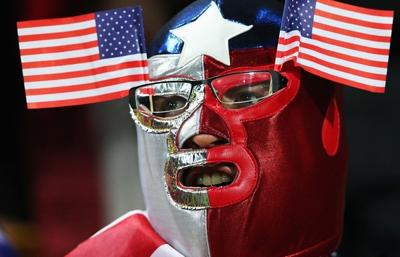
“It’s often easier to point the finger at national coaches when things don’t go to plan.” –Working Class Rugger
 WOLLOGONG, AUSTRALIA – Inspired by the comment left by Grant A. Cole, I thought I would look at the challenges that face not only the national teams of Australia and the USA, but also the development of the game at the grassroots levels in both nations. That challenge being access to quality and well-structured coaching and its impact on kids through to the elite tiers of the game.
WOLLOGONG, AUSTRALIA – Inspired by the comment left by Grant A. Cole, I thought I would look at the challenges that face not only the national teams of Australia and the USA, but also the development of the game at the grassroots levels in both nations. That challenge being access to quality and well-structured coaching and its impact on kids through to the elite tiers of the game.
In my first article, I highlighted the lamentable records of both nations in their international outings so far in 2013. Incidentally, the Wallabies did add a second victory to their season over the weekend, but it was ugly in even uglier weather conditions.
The performances of both teams can be directly linked to the coaching methodology employed – not necessarily just during the periods in which both squads are in camp preparing for a match – but the overall standard of the coaching they receive throughout their Rugby-playing lives. It’s often easier to point the finger at national coaches when things don’t go to plan. Yet, it’s not completely unwarranted. In comparison to American Football, rugby is a more free-form, player-orientated game. The influence of a coaching staff in the determining of tactics, devising of defensive and offensive playing patterns and the overall physical conditioning of squad members does play a significant role in the direction of the game and often the result. However, there is only so much an elite level coach can do and if a player hasn’t had the appropriate structure and skills development from a younger age there really isn’t much more they can really fix. Re-educating and up-skilling players in the basics isn’t – and frankly shouldn’t be – the responsibility of a national coach or any other at the elite levels of the game.
 Contrary to popular opinion, it doesn’t require the game to be adopted by players at the age of 5 or 6. In fact, there are numerous example of players who were late to the game, making it as professionals and earning international caps. This is where the Eagles have fallen short of late. They lack the coaching expertise at their infancy in the game to equip them confronting the likes of their northern neighbours.
Contrary to popular opinion, it doesn’t require the game to be adopted by players at the age of 5 or 6. In fact, there are numerous example of players who were late to the game, making it as professionals and earning international caps. This is where the Eagles have fallen short of late. They lack the coaching expertise at their infancy in the game to equip them confronting the likes of their northern neighbours.
It’s not their fault, though. Nor is it the fault of the dedicated individuals who sacrificed their time and energies to offer kids the opportunity to play the game. The responsibility falls squarely on the shoulders of the National Governing Body. As guardians of the game in each nation, they are charged not only with developing the participation element of the game, but in establishment of strong, top practice coaching standards – through the conception and delivery of programs – to emphasize the necessity in providing structure to the manner in which skills training is presented.
 In Australia, we do have a defined coaching pathway that each and every coach must abide by and regularly update their skills. The issue is accessing the means to expand its reach and provide more opportunity for kids to access the game. It’s a tough proposition to address. But one that if successfully implemented, will lead the USA Rugby Eagles and Rugby in the USA in general, to heights closer to those of the Tier One Unions.
In Australia, we do have a defined coaching pathway that each and every coach must abide by and regularly update their skills. The issue is accessing the means to expand its reach and provide more opportunity for kids to access the game. It’s a tough proposition to address. But one that if successfully implemented, will lead the USA Rugby Eagles and Rugby in the USA in general, to heights closer to those of the Tier One Unions.
Or at the very least, victory of the Canadians.

